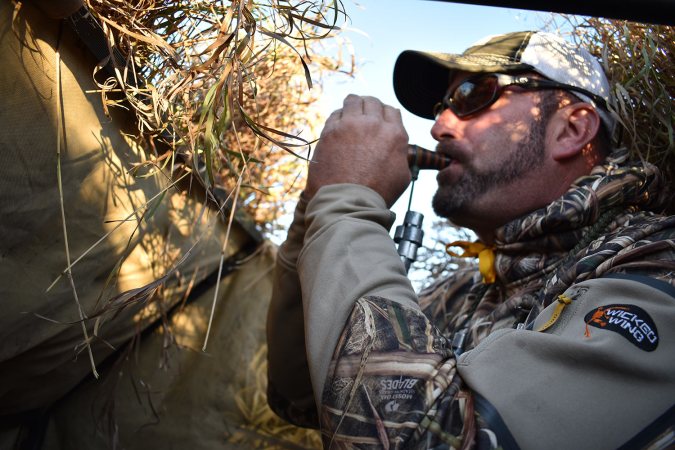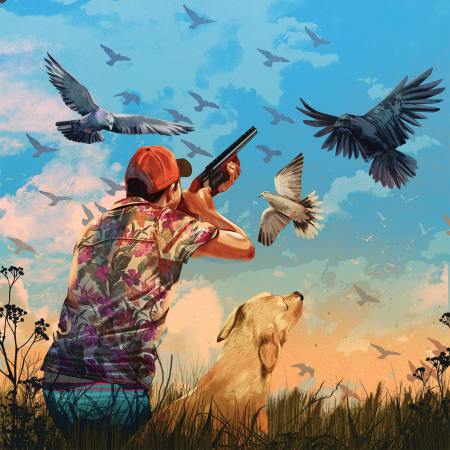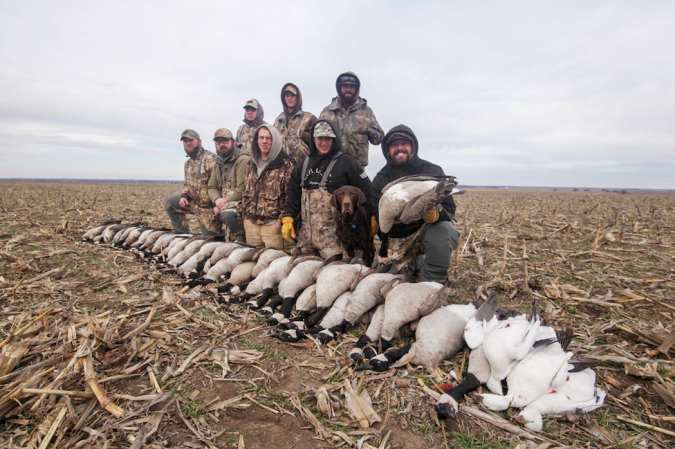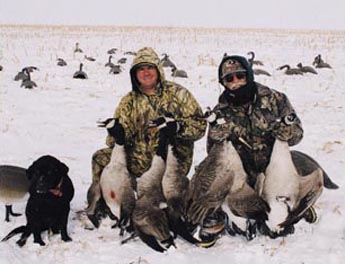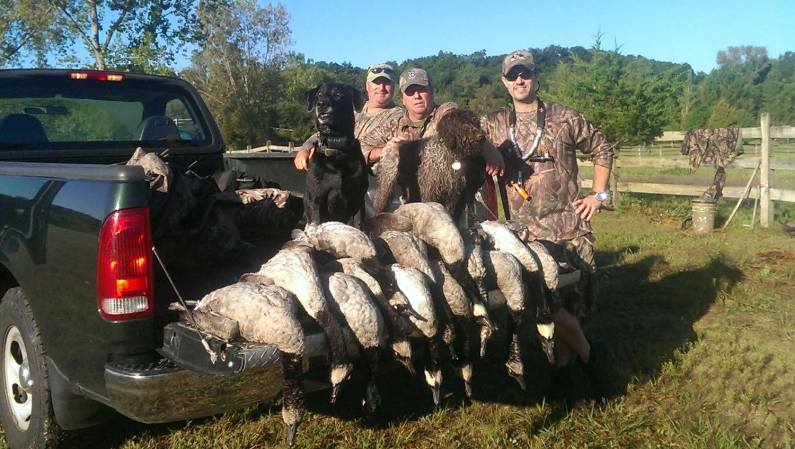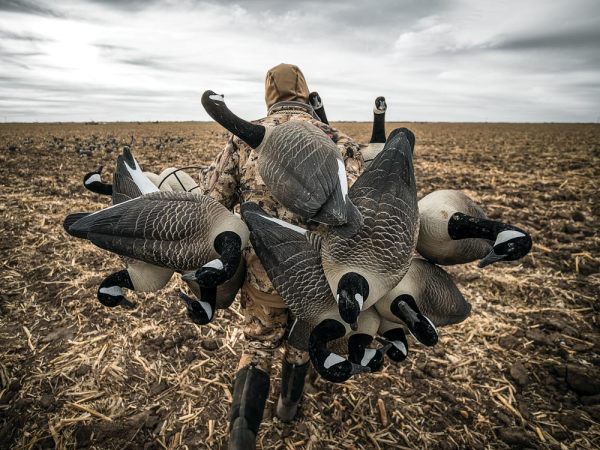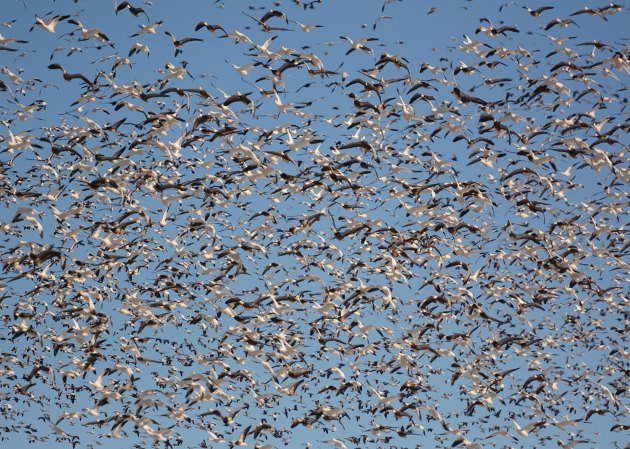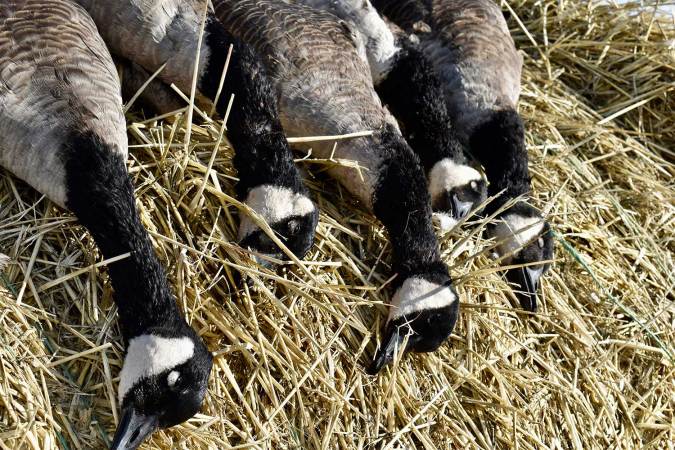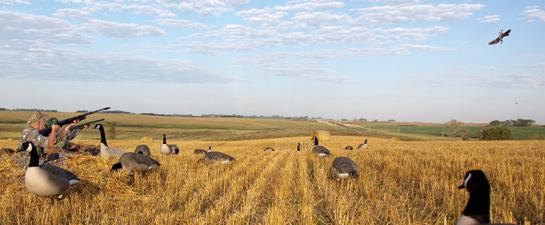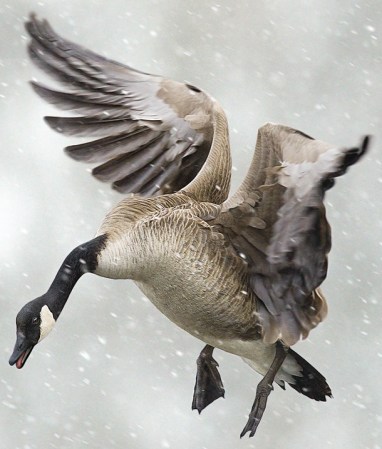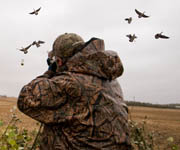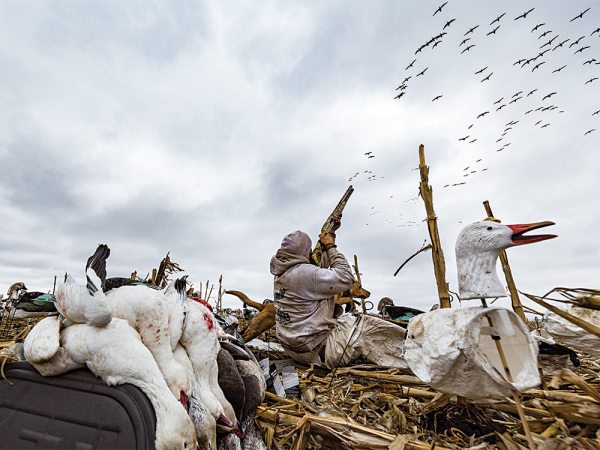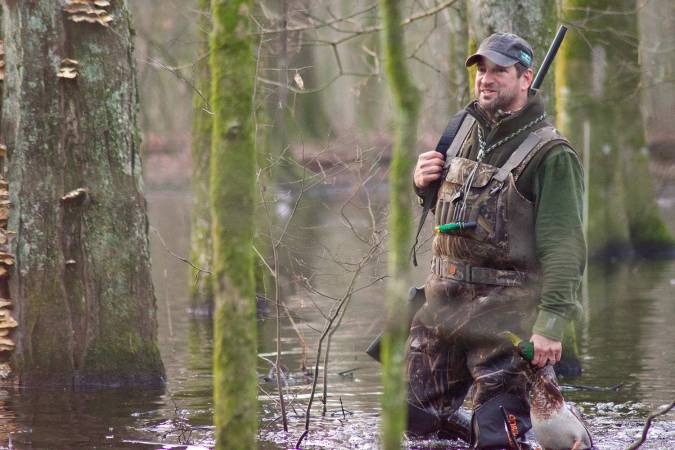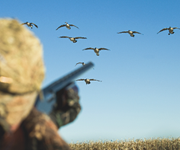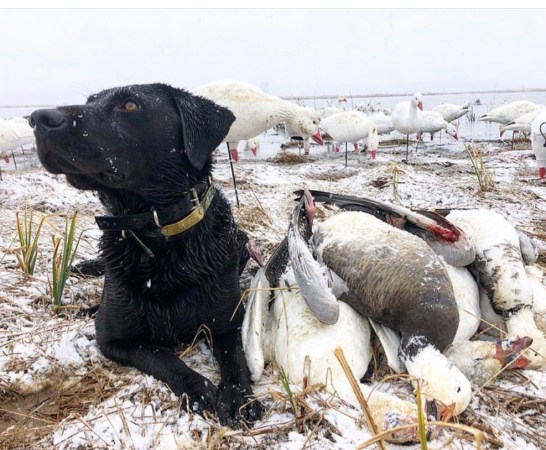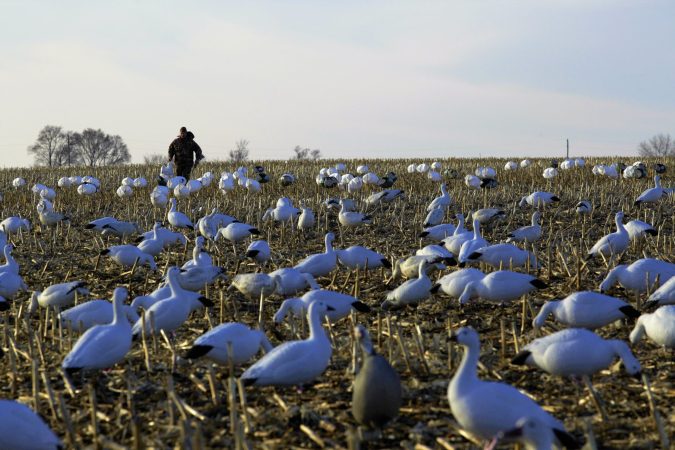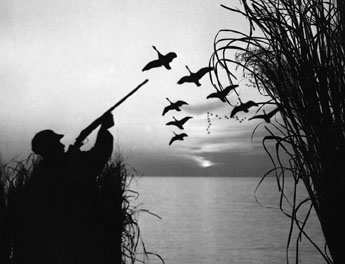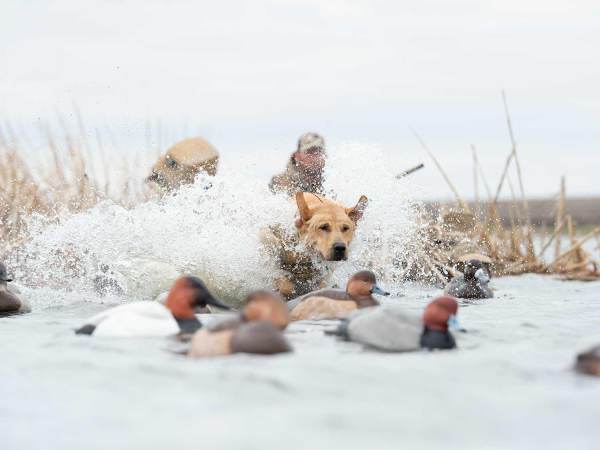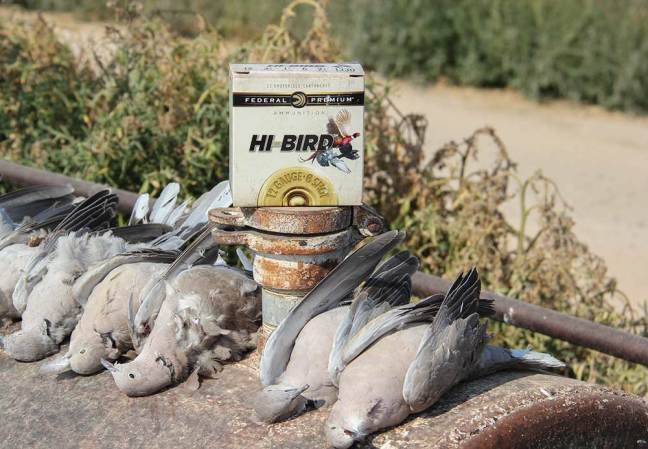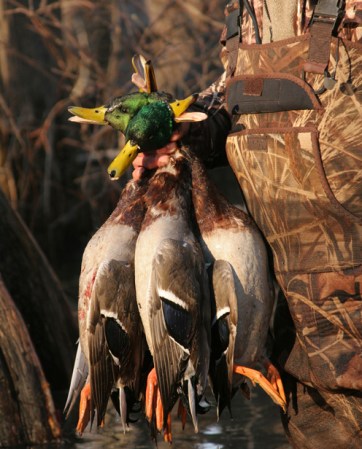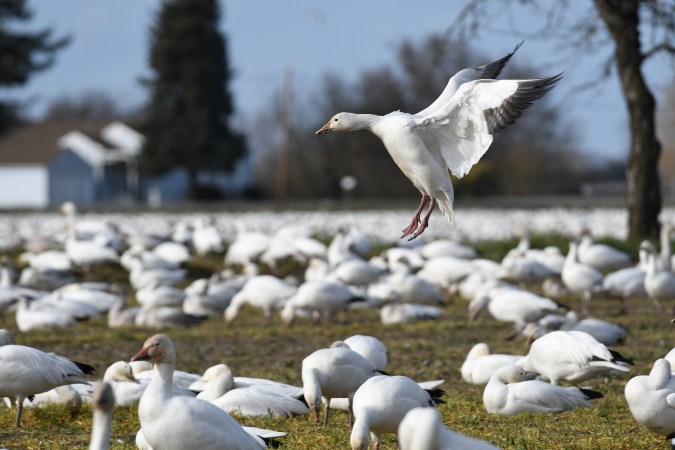We had two geese dead in the decoys and a third was winged, waddling its way out of the oat field. My hunting partner was scrambling to reload his Remington 870 and I was trying to line up my Lab Otis (who was going berserk with all the action) on the escaping honker. I peeked out of the blind to see a flock of another dozen geese locked in on our decoy spread. I could hear a fresh batch of geese honking from behind us as well. There were distant flocks to our right and left. We were totally surrounded. This was the moment I had waited all summer for.
Lots of states have early resident goose hunting seasons. Canada goose populations have increased in many flyways to such a degree that resident honkers are considered nuisance critters by many folks. The estimated Canada goose population was around 6 million in 2019 (there was no 2020 waterfowl survey due to COVID-19). Early seasons often offer increased bag limits and opportunities to hunt geese that haven’t had any hunting pressure. But there’s no season that starts earlier, and is more fun to hunt, than North Dakota’s. It opens August 15 for residents and nonresidents, runs into September and allows hunters to take 15 birds per day. For a $50 license plus a federal waterfowl stamp, you can hunt in the mornings and evenings in cut fields or over water. If you’re a nonresident, the early season doesn’t count against your 14-day, or two separate seven-day, limit of hunting during the regular waterfowl season.
Hunting this season can be a fun-as-hell, barrel burning, freezer stocking, trip. But it can also turn into an incredibly frustrating hunt if you don’t understand the birds you’re hunting and the environment you are hunting them in. I’ve made the trek west from my home state of Minnesota the last four seasons, hunting with a small spread and no guide. Here’s what I’ve learned and what you should know if you decide to hunt this season yourself.
1. Understand the Birds
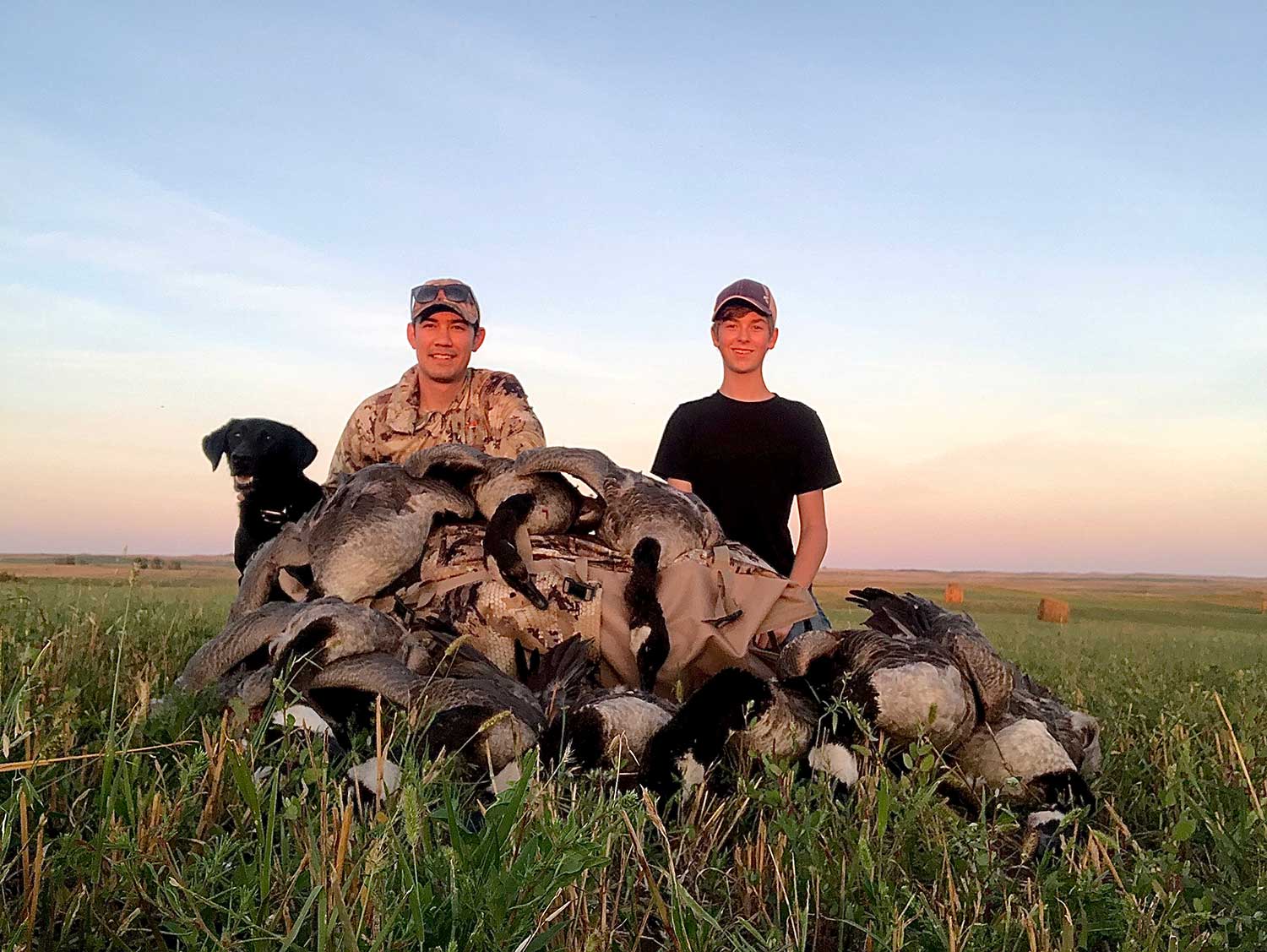
You’re not hunting migrating geese. These are residents who have nested in the area and know it well. During this time the geese will be in family groups that gather in larger groups of 100 to 300 (though sometimes a little larger) to feed. The geese will typically roost on big lakes and feed relatively close to the roost. In some cases, I’ve seen lazy flocks walk from their roost lake about 100 yards to their morning feed (A quick side note here: I’ve been burned by hunting fields that are very close to the roost. The first flight will come in nicely, but the rest of the birds will skirt the field until later in the morning). Expect birds to feed in the morning and the evening, though not necessarily in the same fields. The geese will mostly be feeding on cut oats and alfalfa. Like most waterfowl hunts, scouting is critical. Find out where the birds are roosting, where they are feeding in the morning, where they go to loaf during the middle of the day, and where they feed in the evening. I recommend at least a full day of scouting before you hunt (but a day and a half is even better).
I’ve had stellar shoots during morning and evening hunts though never on the same field back-to-back. Usually, when you hunt a field on early geese, that spot will be burned for the rest of your trip, so make it count. It’s smart to lock down a few fields you can hunt and then decide which ones you’ll target in the morning vs. the evening.
2. Understand the Place
For most of the hunting here you’ll need to get permission to hunt private fields. Technically it is legal to hunt unposted private lands without permission in North Dakota, unless they contain unharvested cereal grains: “It is illegal to hunt in unharvested cereal and oilseed crops, including sprouted winter wheat, alfalfa, clover and other grasses grown for seed, without the landowner’s consent,” according to the regulations. See the full set of posting and trespass regulations here.
But even if you can legally hunt a piece of unposted private ground without getting permission, I highly recommend you ask the landowner. There are a few reasons for this. First, it’s the decent thing to do. Plus, if the rancher doesn’t want you out there, he might drive out during the middle of the hunt and kick you off (blowing your opportunity). If you get permission, it will ensure that you get to hunt the field (but you should still show up early in case there’s competition for the field). And lastly, most of the folks I’ve met out here are nice, salt-of-the earth types. If they let you hunt, they’ll probably tell you where they’ve seen birds in the past and when the birds have been showing up. They might even invite you back for duck season.
A few more notes on working with landowners: don’t rut up their fields or roads, don’t destroy their hay bales to make a blind, don’t leave empty shells in the field, and please, for the love of god, do not leave a closed gate open (potentially allowing cattle to escape). Committing any of these sins might get you kicked off the place, and even worse, it could prevent the rest of us from ever getting to hunt the property in the future.
Along with dealing with the farmers, you might be dealing with some competition from other hunters. I recommend staying away from larger towns looking for out-of-the way places. If you’re seeing a ton of trucks loaded with decoys while you’re driving around scouting, head for a different area.
3. Find a Perfect Hide
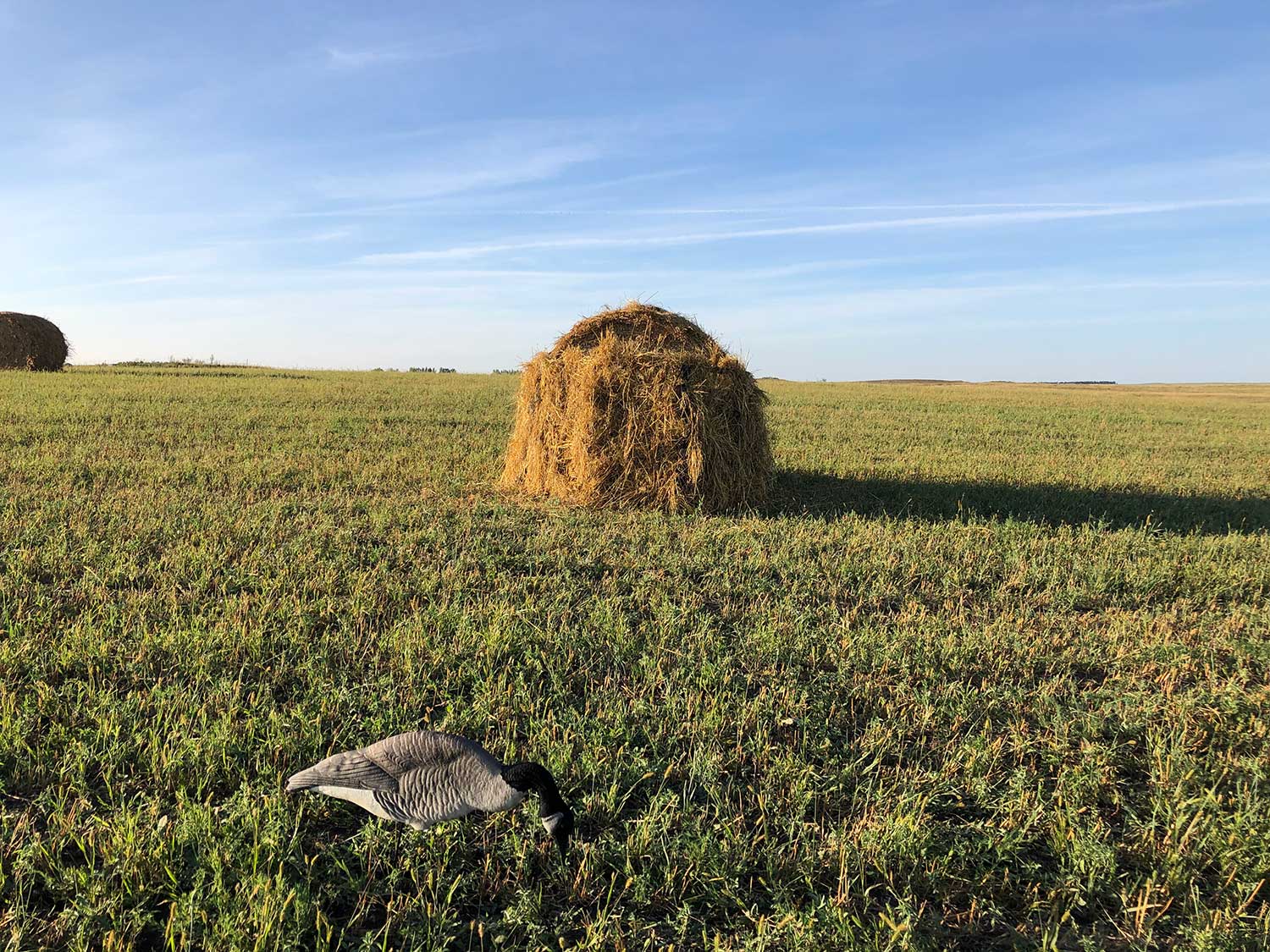
Finding good cover can be feast or famine during the North Dakota early season. On the upside, any edge cover around field edges will be high and green. If you find geese feeding near these edges, it’s pretty easy to throw down some layout blinds and brush them in to perfection. Fields in this country are big and wide open. Geese will often gravitate to a hilltop toward the middle of the field where they have a good vantage point. If there are bales in the field, you’re in business. I use Tanglefree’s panel blind, rake up some loose hay from the field, and stick it along the front of the bale (see the photo above).
If there are no bales, you can either try to coax birds over to the edge of the field with your spread and calling, or you can just find a different field to hunt. Trying to use a layout blind in the middle of a cut hayfield isn’t going to work, even on gullible early geese. If you’re really desperate, you can lay down in the field with a ghillie blanket on top of you (use your blind bag as a headrest) and cover it with raked up chaff. Place the decoys around you and even between your legs to make the spread look more natural. If geese are coming close but won’t finish, then you know your hide is not good enough. Change the setup and fix the hide immediately. Don’t watch three more flocks of geese skirt your setup just like the first group.
Early geese come into a field low and hot off their roost or day loaf. They often will come straight in, not circling or making a pass, mainly because the birds are young and can’t fly very well yet. So pay attention to what direction the geese approach the field from, use the wind to your advantage (I like it straight from back on early geese), and try to avoid facing into the rising or setting sun.
4. Go Light on Decoys and Calling
I’ve never hunted geese that lock in to decoys so willingly and perfectly as early North Dakota honkers. Just like in other early season goose hunting, smaller spreads and lighter calling are the way to go here. I run a spread of 24 full bodies, 6 shells, and 12 GHG silhouettes (which I don’t always put out). You want to hunt the X for early geese, and once you’re there, it doesn’t take much to bring them in. I also like the light spread because it’s fast and easy to set up and take down. Mobility is key since I’ll often hunt in the mornings and evenings.
Early geese are often in family groups and sometimes don’t want to land right on top of a feeding flock in a field (big honkers like to have plenty of space). I mimic this and set the decoys in family groups pretty close to the blind, with the landing zone within 20 yards. That way, even if they short stop the spread by 10 or 15 yards, they’ll still be in range.
I am not a great goose caller, but for these birds you don’t have to be. Simple honks and clucks are enough to bring birds toward your spread. A few moans will convince them to touch down. Save your hammering for later in the season. The only time I’ll crank up the volume is if I see a single in the distance. Singles are very susceptible to calling this time of year.
Read Next: 9 Overlooked Early Season Goose Hunting Tips
5. Have a Plan For the Meat
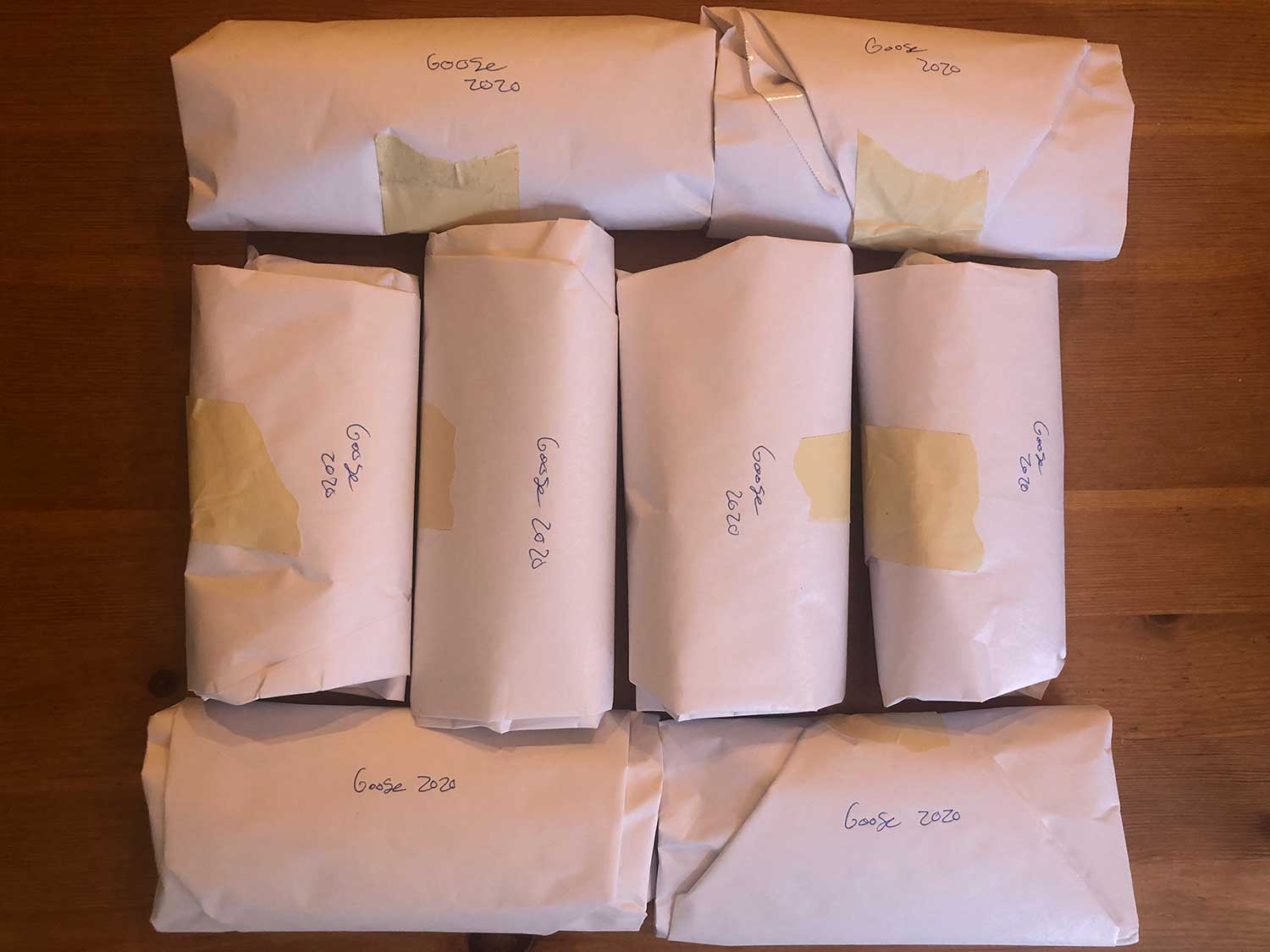
Because the daily limit is so high, there’s a good chance you’ll pile up a whole mess of birds. It’s hot this time of year (daytime temps can hit the mid 80s) and you need to get your geese cleaned quickly stored in a cooler or freezer ASAP. Young, early-season geese are some of the best eating birds in waterfowling (find my go-to goose recipe here). You’ll notice the meat is much more pink on young birds. But you have to treat them right. Don’t leave your geese sitting in the hot sun. Also, try to keep them from getting covered in dust in your pickup bed while you’re driving backroads. And just because you can shoot 15 birds, doesn’t mean that you have to. On that crazy evening that we were surrounded by geese, my hunting buddy and I killed 10 birds with about 45 minutes of shooting light left. We still had a spread to pack up, birds to clean, and dinner to eat. We decided to call it quits even though we knew more birds would hit the field. You’ve got to save some for the boys down south, after all.

